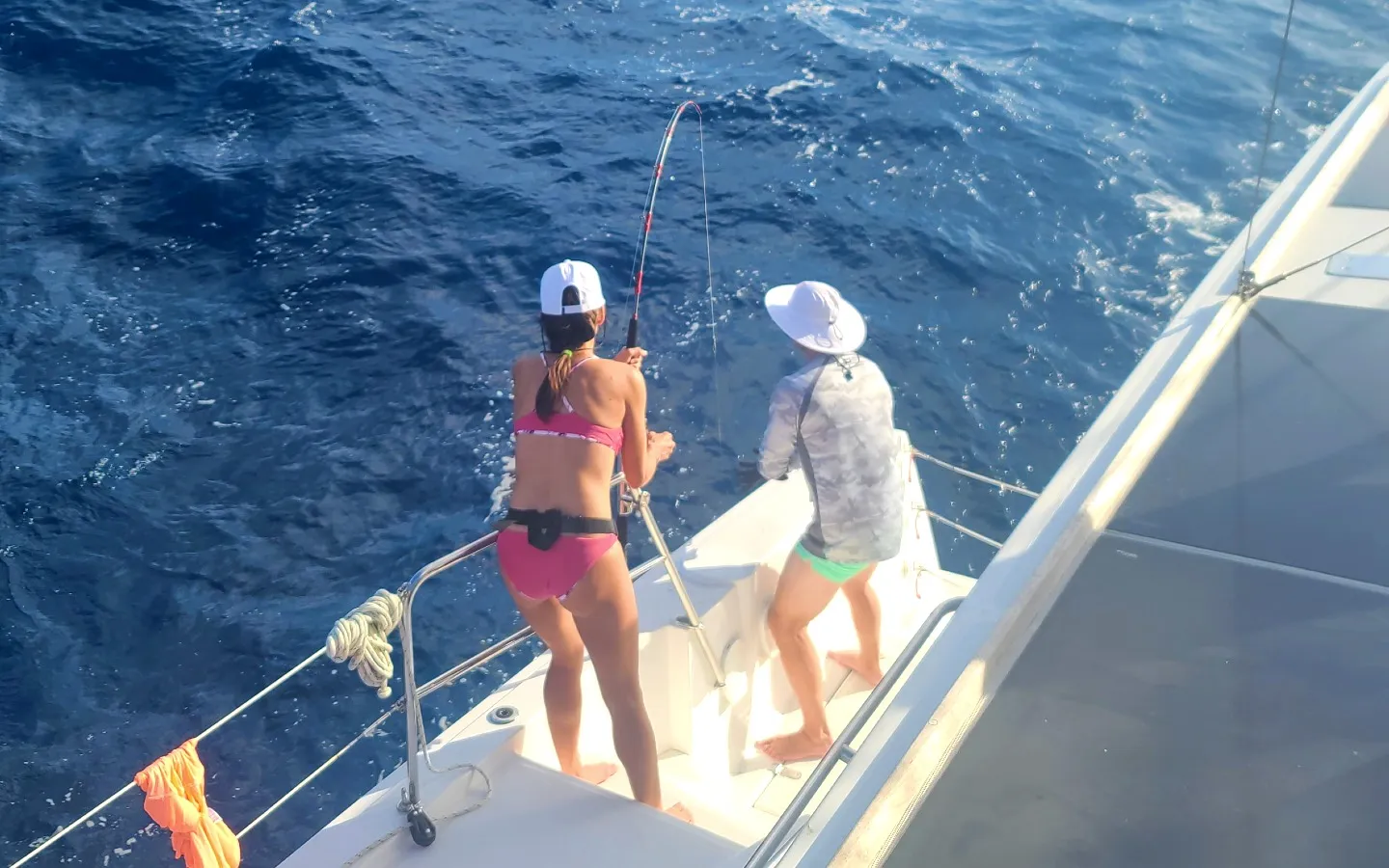

Matt Weidert
Fish of the Virgin Islands
The fish of the Virgin Islands are similiar to what you can expect elsewhere across the Caribbean, from the Bahamas to Grenada.
Many of them, are delicious eaters, and others, fierce fighters.
If you're planning a yacht charter or are thinking about booking a fishing trip, these are the fish you are most likely to encounter in the Virgin Islands. That includes the British Virgin Islands, Spanish Virgin Islands, and US Virgin Islands.
If you want to learn more about fishing techniques in the Virgin Islands, check out my tackle and fishing technique recommendations here.
- Offshore fish of the Virgin Islands
- Inshore fish of the Virgin Islands
Offshore fish of the Virgin Islands
Location: north and south drops, or in the deep water between St. Thomas/St. John and St. Croix.
Offshore is my favorite place to fish in the Virgin Islands. We typically head out to the north or south drop and troll back and forth in 200 to 600 feet of water.
Since we are usually sailing, we'll have two lines out - one surface lure such as an Iland Ilander skirt. The second is a diving lure such as the Yozuri Bonita.
Here are the offshore fish species you can expect to catch:
Here are the offshore fish species you can expect to catch:
Wahoo
Wahoo is by far my favorite eating fish that we catch. It's great as sashimi and in poke bowls, or grilled up in fish tacos.
The wahoo fishing is always better in the fall, beginning in November, although it's possible to hook one anytime of the year.
Since they claim to be the fastest fish in the ocean, they are also a lot of fun to fight. On my last trip, a huge one ran out most of my line and then snapped the 80 pound braid!
We've always had more success with wahoo using diving lures that swim 15+ feet below the surface of the water, such as the Yozuri or Rapala X-Rap Magnum.
Mahi Mahi (dolphin fish)
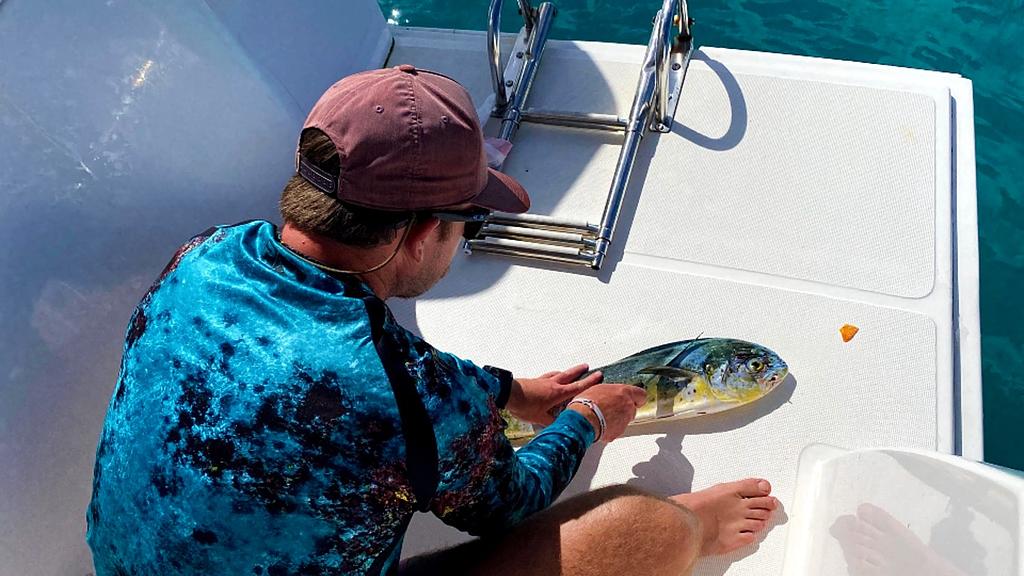
Mahi are unmistakable with their shades of green, yellow, and blue.
You can catch mahi year round, in the shelf areas, as well as offshore.
Look for floating debris or sargassum - they don't like the sun and enjoy shading themselves beneath. If you can see them, stop the boat and cast a popper lure near them. They can't resist.
Mahi always become great candidates for fish tacos on our yacht charter trips. They are also excellent sauteed and crafted into a sandwich.
Tuna
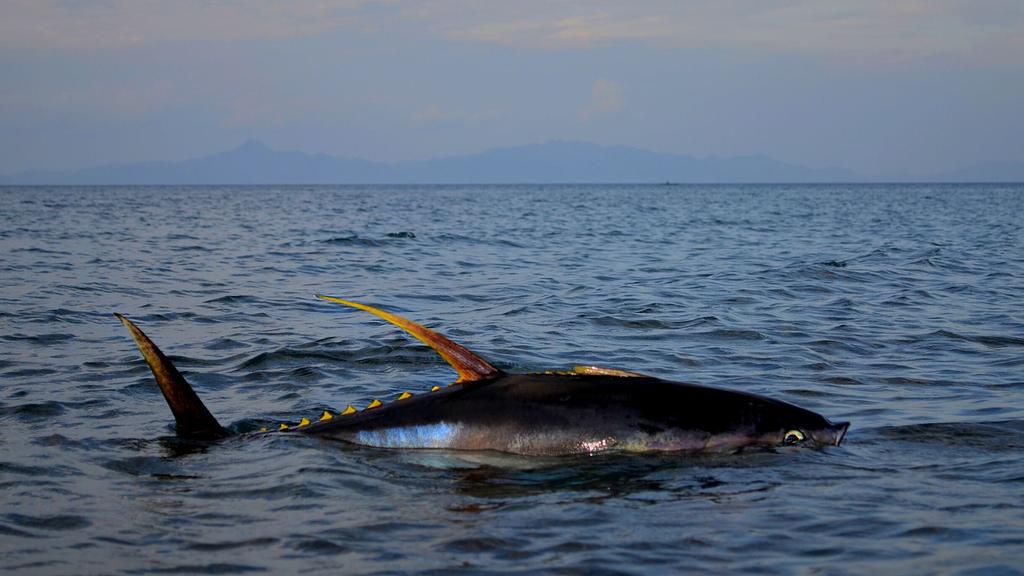
Yellowfin tuna are also easy to identify with the yellow markings and distinctive sickles. They can get quite large, compared to their cousins the blackfin and skipjack. Skipjack can be distinguished from blackfin with their horizontal stripes on the belly.
Tuna can be targeted by trolling using skirts and diving lures. If you see birds attacking a bait ball, that's also a good sign tuna can be near.
Yellowfin is the best eating tuna, but all three are worth eating. Straight up with some soy sauce or cooked rare is the way to do it.
Marlin
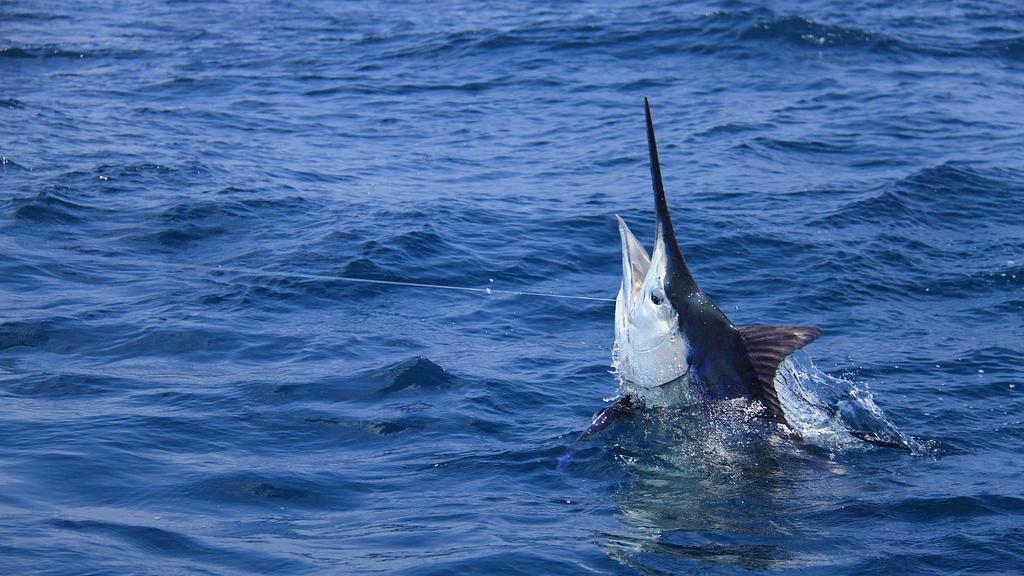
Honestly, I'm not ever intentionally targeting marlin. If we ever caught one it would surely be released. I really don't want to have a several hour battle either since we usually have a lot of ground to cover on our sailing trips (such as my crossing from St. Croix to Culebra on my Fall 2022 trip).
They can be caught in the Virgin Islands though, and it's great fun if you have the right equipment and sportfishing boat.
The size of the marlin that can be caught on the north drop is something of legends. You can also encounter marlin in the deepwater between St. Thomas/St. John and St. Croix.
Sailfish
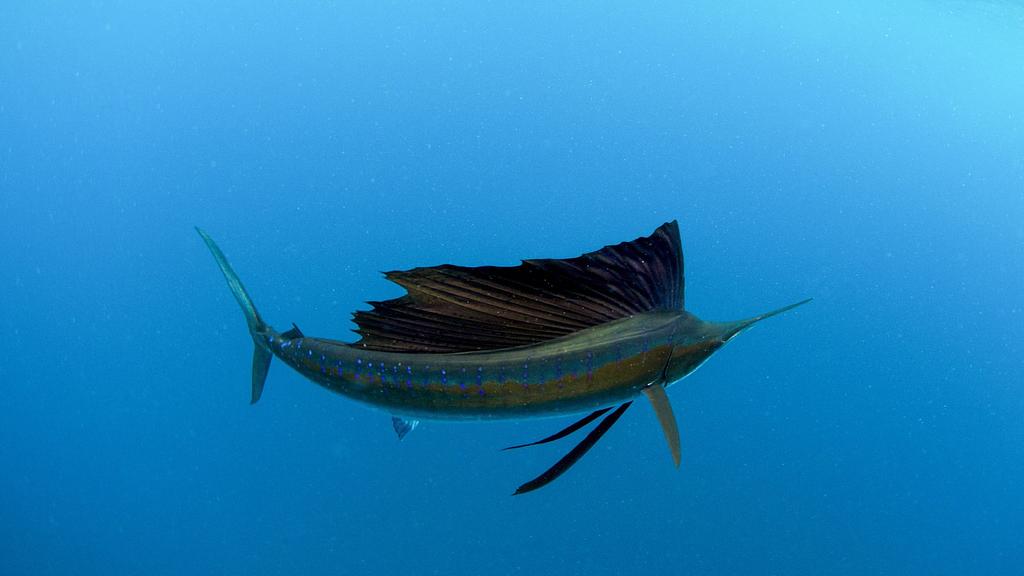
Sailfish are typically caught for catch and release beginning in the fall months when the water begins to cool.
If you know where to look, you can see them surfing swells at the surface when their distinctive sail breaks the water. Anglers can then target sailfish by casting a surface lure or live bait to them.
Inshore Virgin Islands fish species
Location: shelf and reef areas, <150 feet
Inshore areas are great for bottom dropping, drift fishing, or fishing off the back of the boat while at anchor.
If shallow enough (I'm only a beginner at spearfishing), we'll hop in and try and shoot with with a Hawaiian sling or speargun.
Barracuda
.jpg)
This is, without a doubt, the fish we catch most frequently while trolling. They just can't resist my lures, I guess!
They are fun to catch, but not the ones we want to eat. With the potential for ciguatera poisoning, especially the larger ones, we always release them.
Another reason we don't eat them? They smell...apparently the meat doesn't but their skin is another story.
Mackerel
.jpg)
I've yet to catch a spanish mackerel, but for some reason we have hooked plenty of king mackerels. You can tell the difference since the spanish mackies have distinctive yellow spots.
We recently caught a cero mackerel on our USVI and SVI trip - it made excellent eating! They look pretty similar to spanish mackerels, but have a distinctive stipe.
Spanish/cero mackerels are the better eating fish. King mackerels are oily and require a different type of preparation, such as by smoking.
Toothy fish, similar to the wahoo and barracuda, you'll want to use a wire leader if you think you might hook one.
Bonito (little tunny)
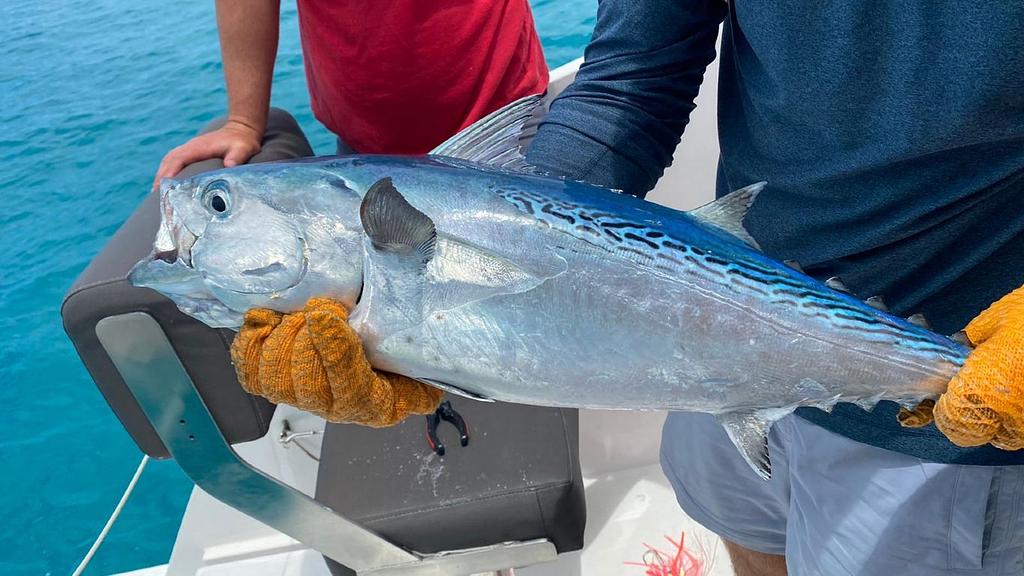
Another fish on my list that we catch and release. I've just heard the meat is not that great to eat. They are shaped like tuna, but you can identify them by the squiggly dark lines on their back.
Jacks
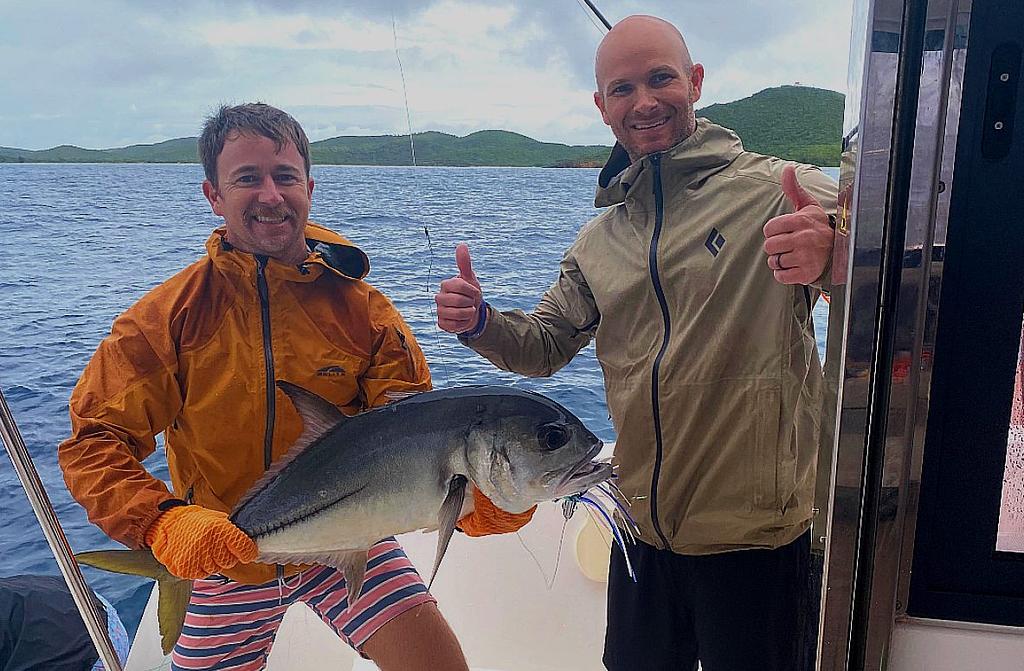
There are many different types of jacks. I think some are good eating, but I don't have a sharp enough eye yet...we typically catch and release them if we hook one.
They can be caught while trolling and also while spear fishing.
Grouper
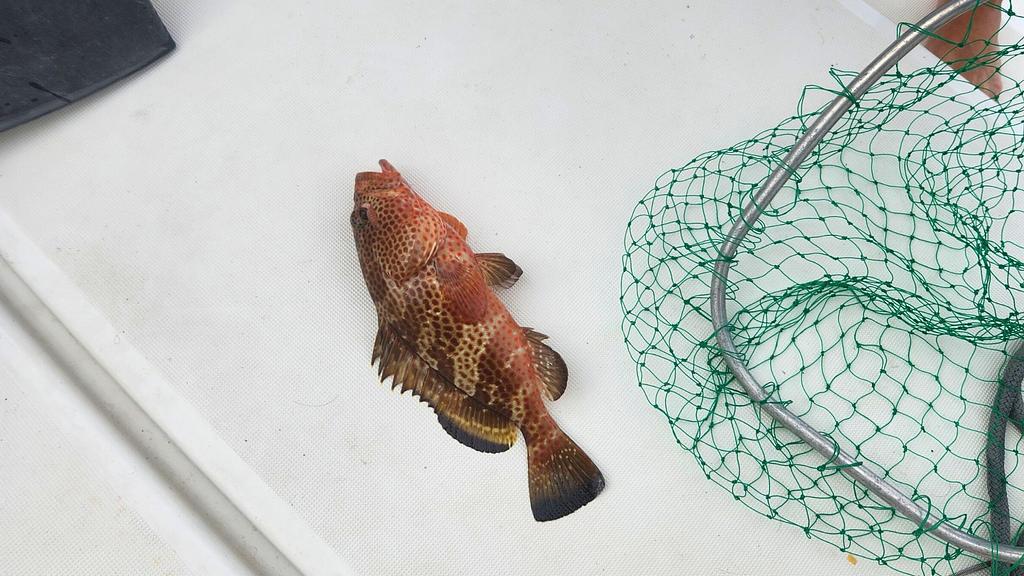
Grouper is one of my favorite fish to eat.
Again, there several species, such as the black grouper and red grouper. You'll want to make sure you are in compliance with fishing regulations. Sometimes there are certain seasons for these type of fish.
Also make sure you don't keep any goliath groupers - they are typically off-limits all year round. Worth checking out the nassau grouper too, they are sometimes off-limits.
Groupers are best hooked while spearfishing or bottom dropping.
Snapper
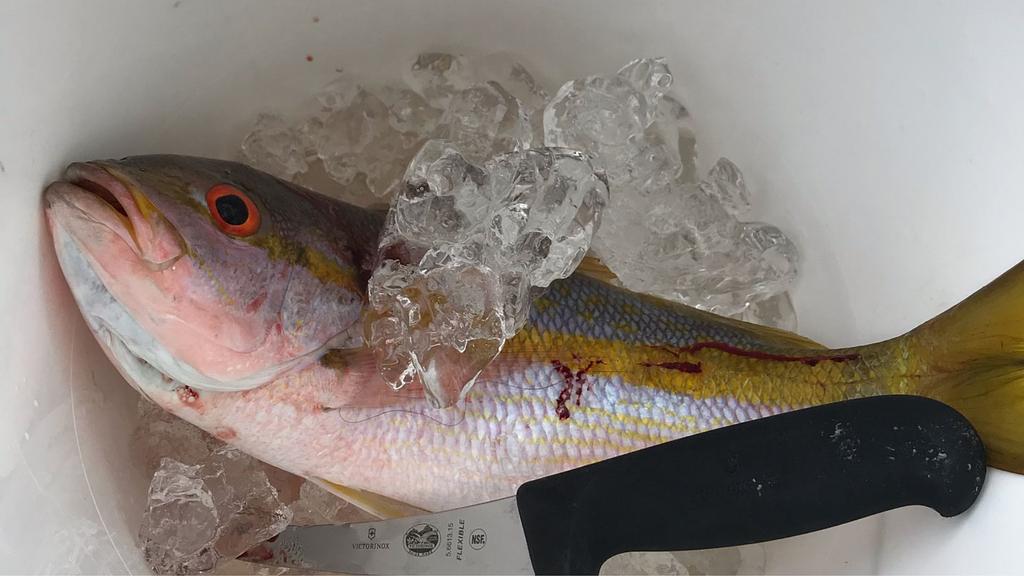
Snapper is another great eating fish. The three most common you might encounter are yellowtail, mutton, and mangrove.
I've hooked both mutton and yellowtail before while trolling over a reef, but they are easier to target by spearfishing or bottom dropping.
Yellowtail snapper also like to congregate underneath your yacht. You can even chum the waters to attract them with leftover meal scraps. If you see this, put on some light fluorocarbon leader and some dead bait - you're likely to get a bite quickly!
Tarpon
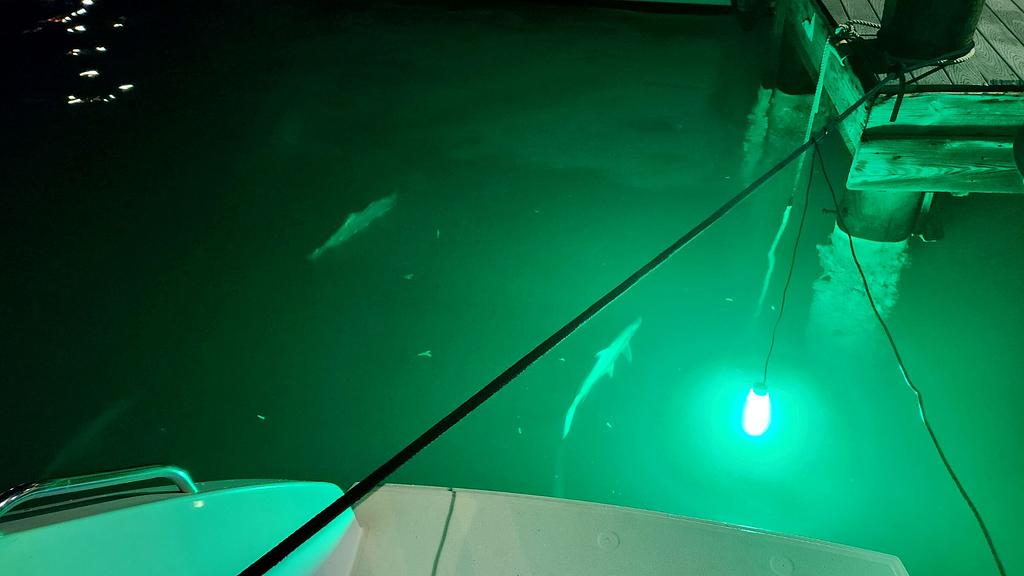
You'll often see tarpon in marinas near the areas where they throw fish scraps. In the British Virgin Islands, they like to hang out at Saba Rock, where they do a daily feeding.
These are definitely not eating fish - the meat doesn't taste very good and the tarpon are quite bony.
You might, however, catch one if you drop a line down with dead bait in your anchorage. They are ferocious fighters and fun to catch!
Lionfish
Lionfish are in invasive species and can be taken any time of year. They don't get very big, but the meat is excellent!
Spearfishing is the way to catch these suckers. For beginners, they make excellent targets since they aren't afraid and don't try to evade you (since they have no predators).
Check out my post about lionfish ceviche that we recently made in the Exumas. It has some cautionary notes about removing the venomous spines (painful but not life threatening).
Spiny Lobster
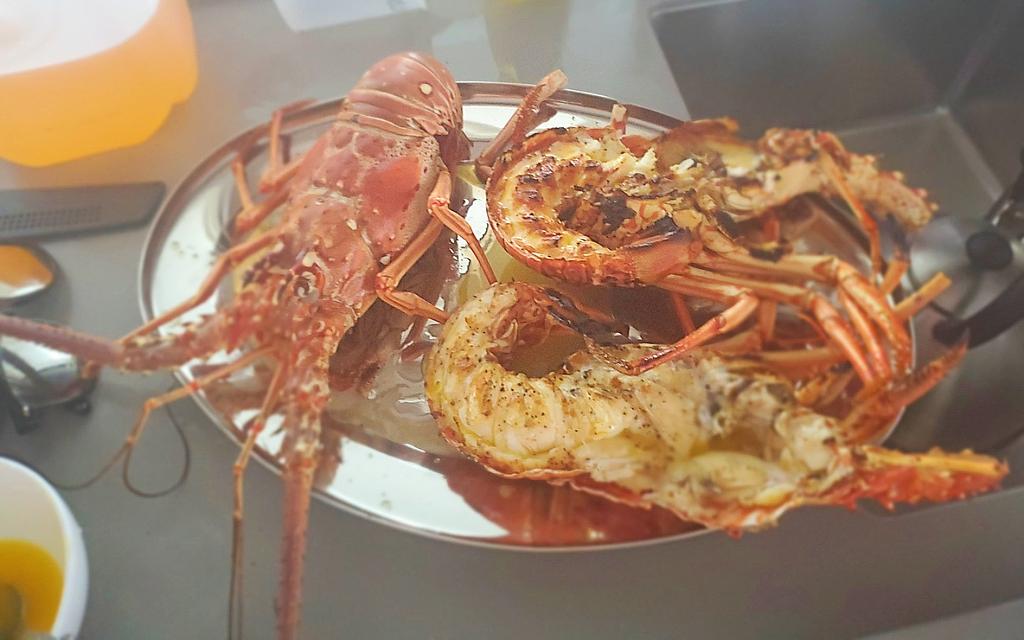
Ok, not a fish, but worth mentioning.
Make sure you check local regulations, they differ, for example, between the USVI and BVIs. In the BVIs, tourists are not allowed to take them at all.
When in season and legal, we use a tickle stick and net to coax them out of their hideouts. A snare is also a good method.
Nothing beats fresh spiny grilled lobster with an epic Caribbean sunset (we've tried boiling too - grilling is better!).

.jpg)
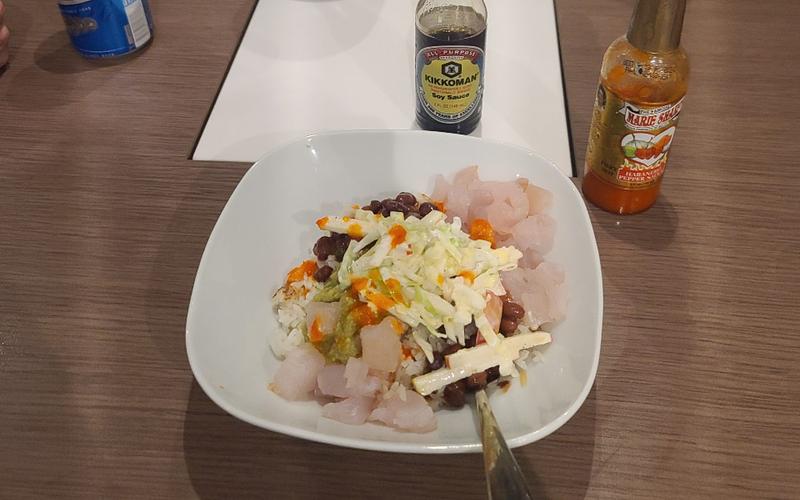
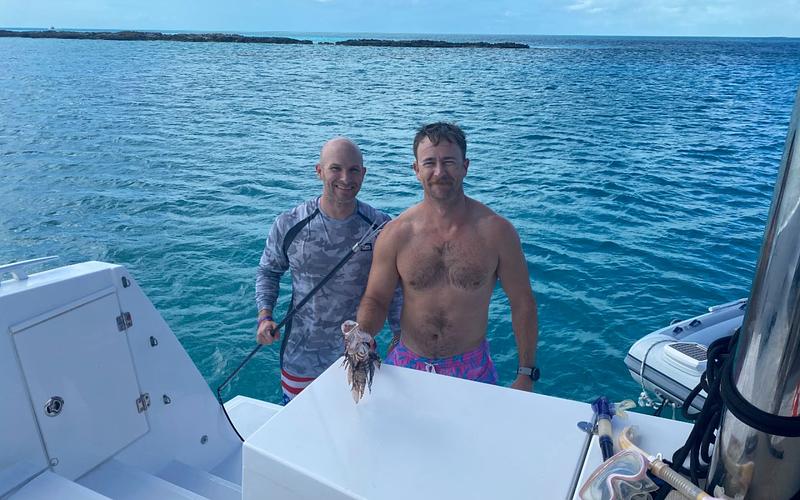
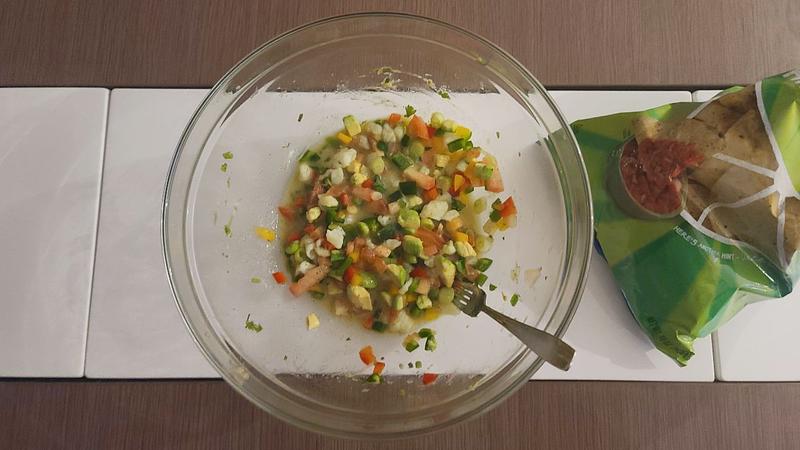

.jpg)

